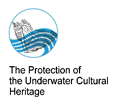Public Access, Museums and Tourism
The oceans are the world’s biggest museum. They contain countless cultural treasures ranging from shipwrecks to sunken cities and prehistoric sites gradually submerged by global sea-level rises. These archaeological sites serve as time capsules. They allow us a brief glimpse into the daily life of the past – life as it was before the site disappeared beneath the waves.
It is important to make this human legacy accessible to as many people as possible. Public access to underwater cultural heritage:
- provides communities with a tangible connection to their past, fosters local pride and stimulates people's awareness and respect for underwater heritage.
- can be a crucial economic asset to the local tourism industry.
- ensures the monitoring of sites' state or preservation and can help finance protection and research.
In the interest of encouraging responsible public access to underwater cultural heritage the Scientific and Technical Advisory Body of the 2001 Convention has recommended to the Meeting of States Parties to promote Best Practice examples from all over the world. These initiatives could include maritime heritage museums, dive trails and virtual exhibits etc.












